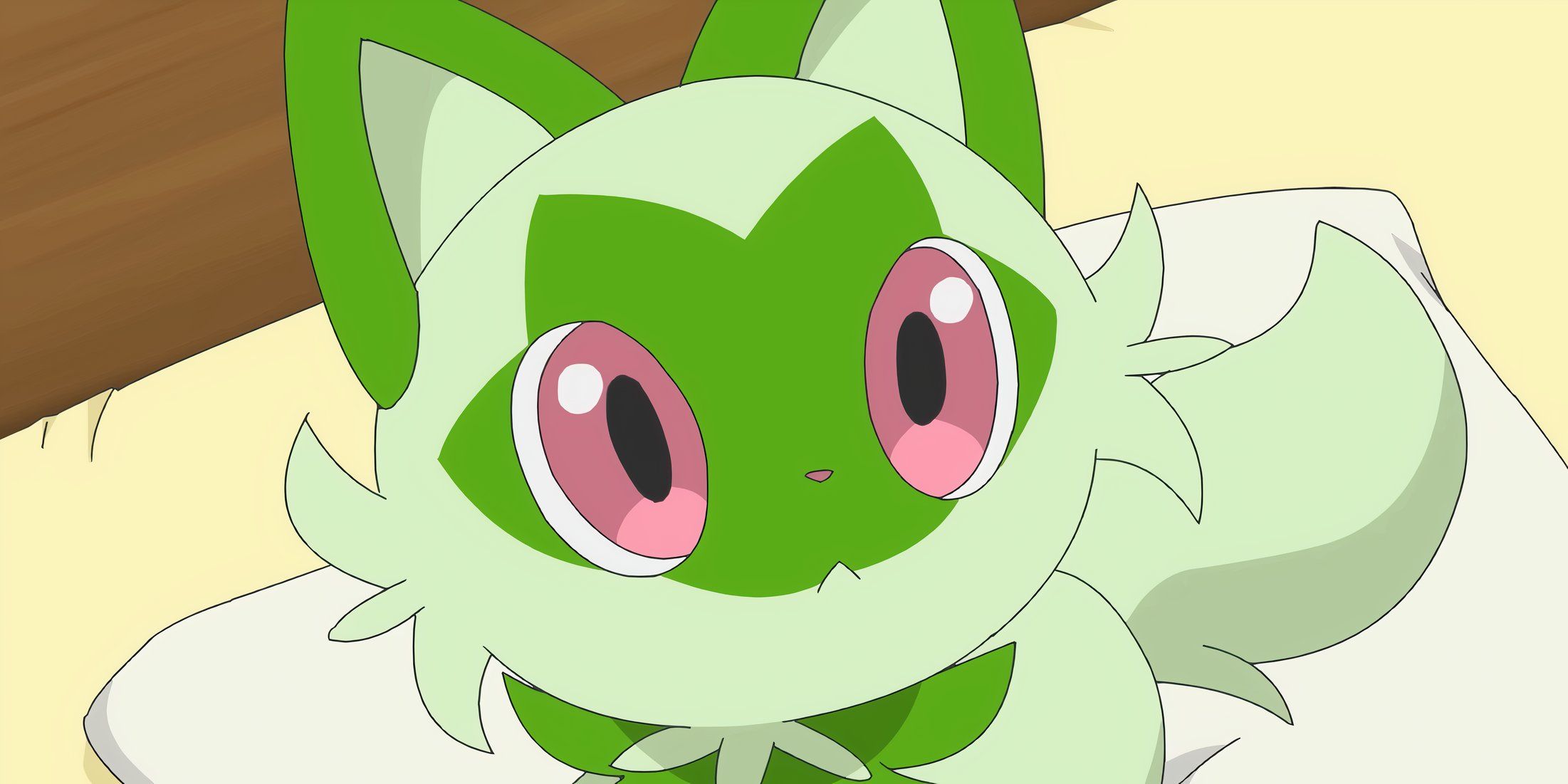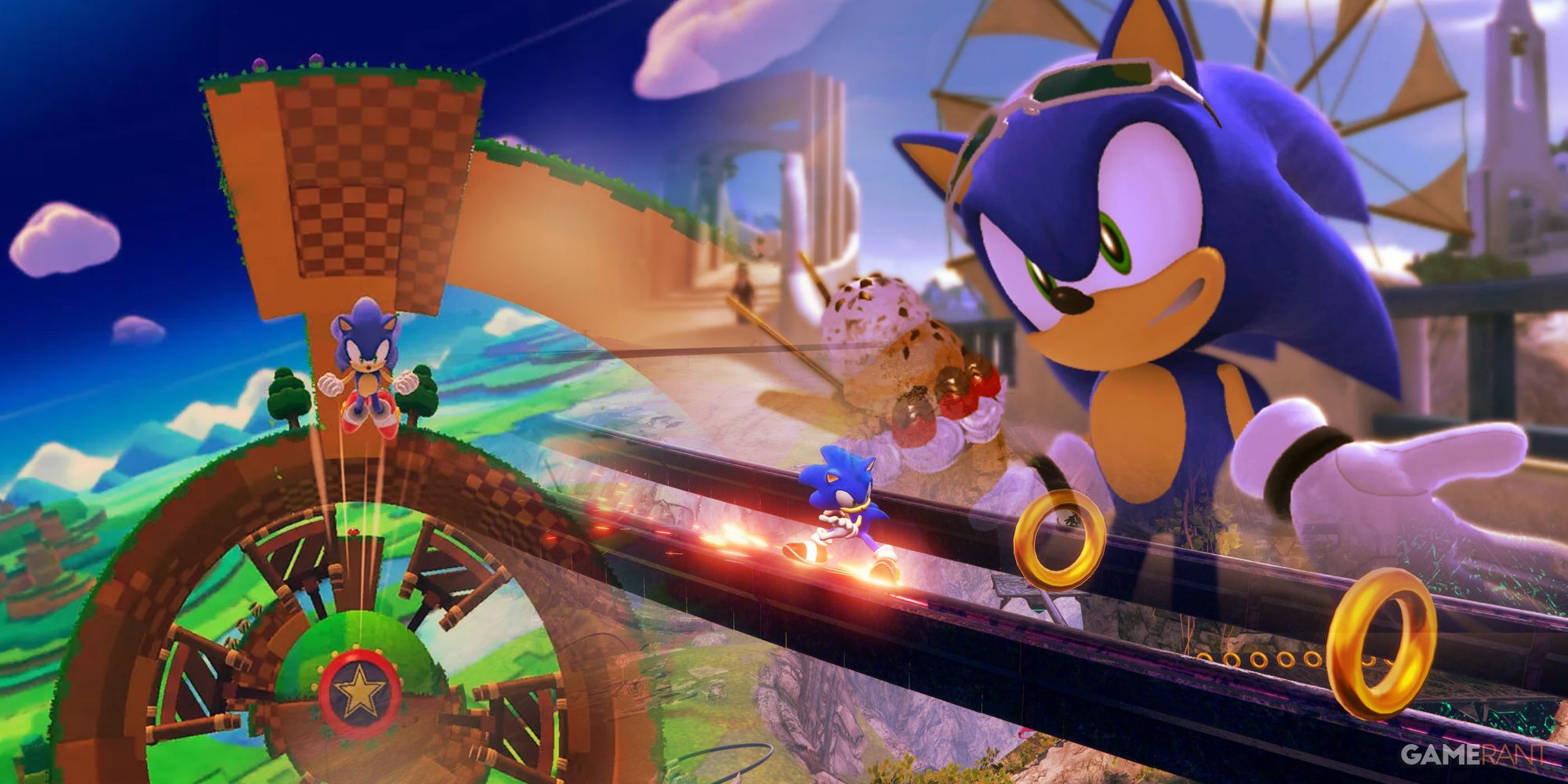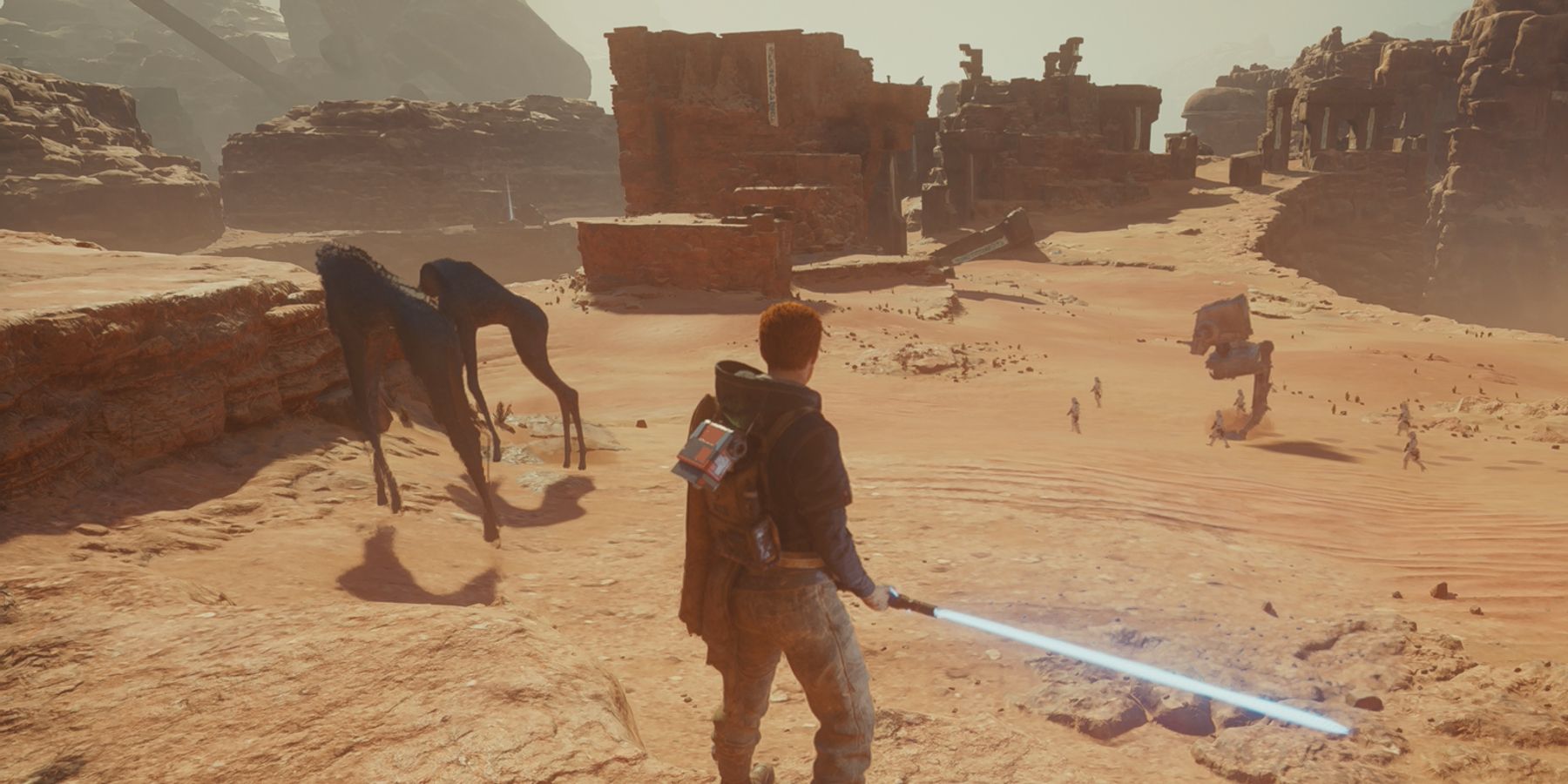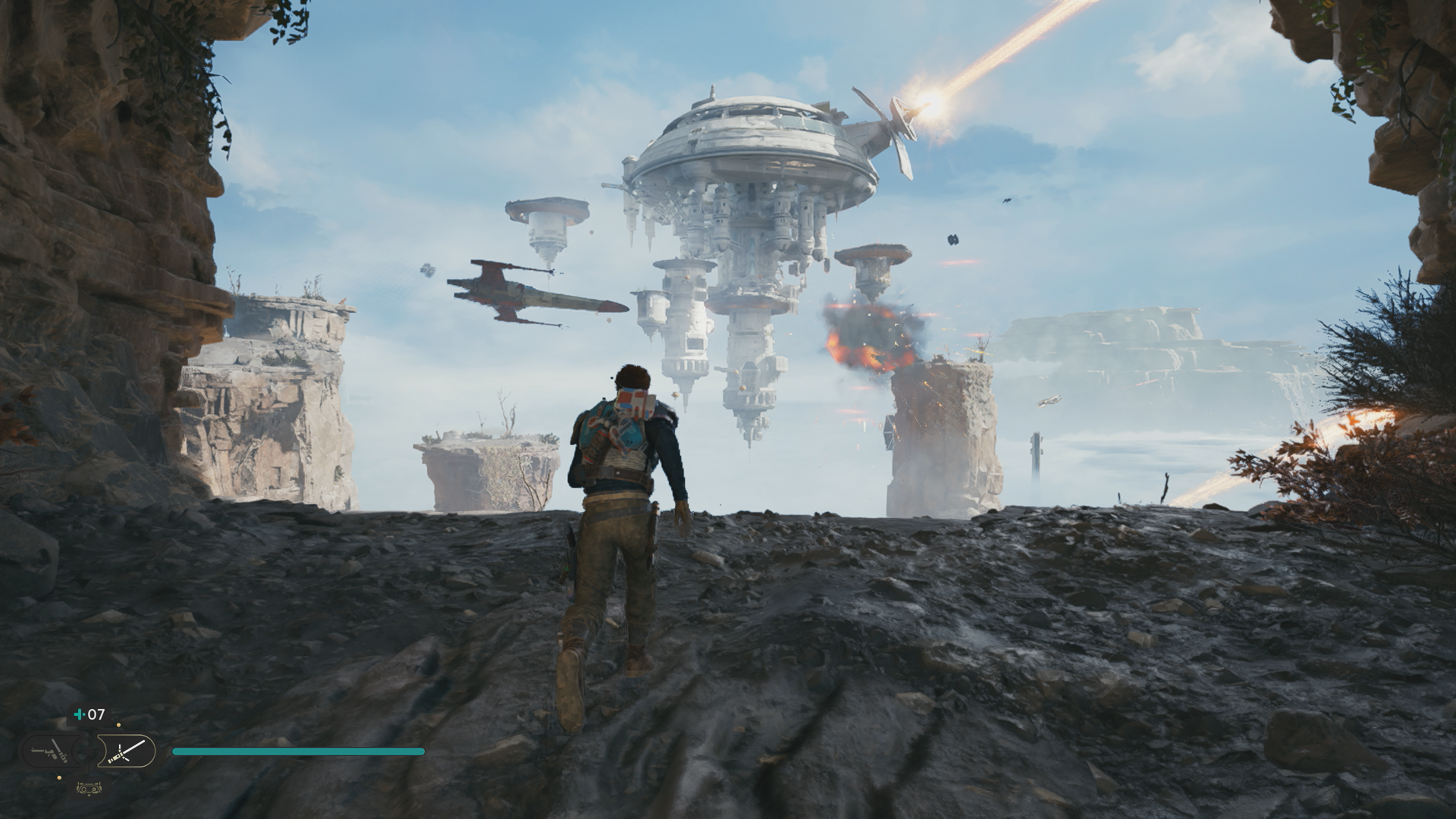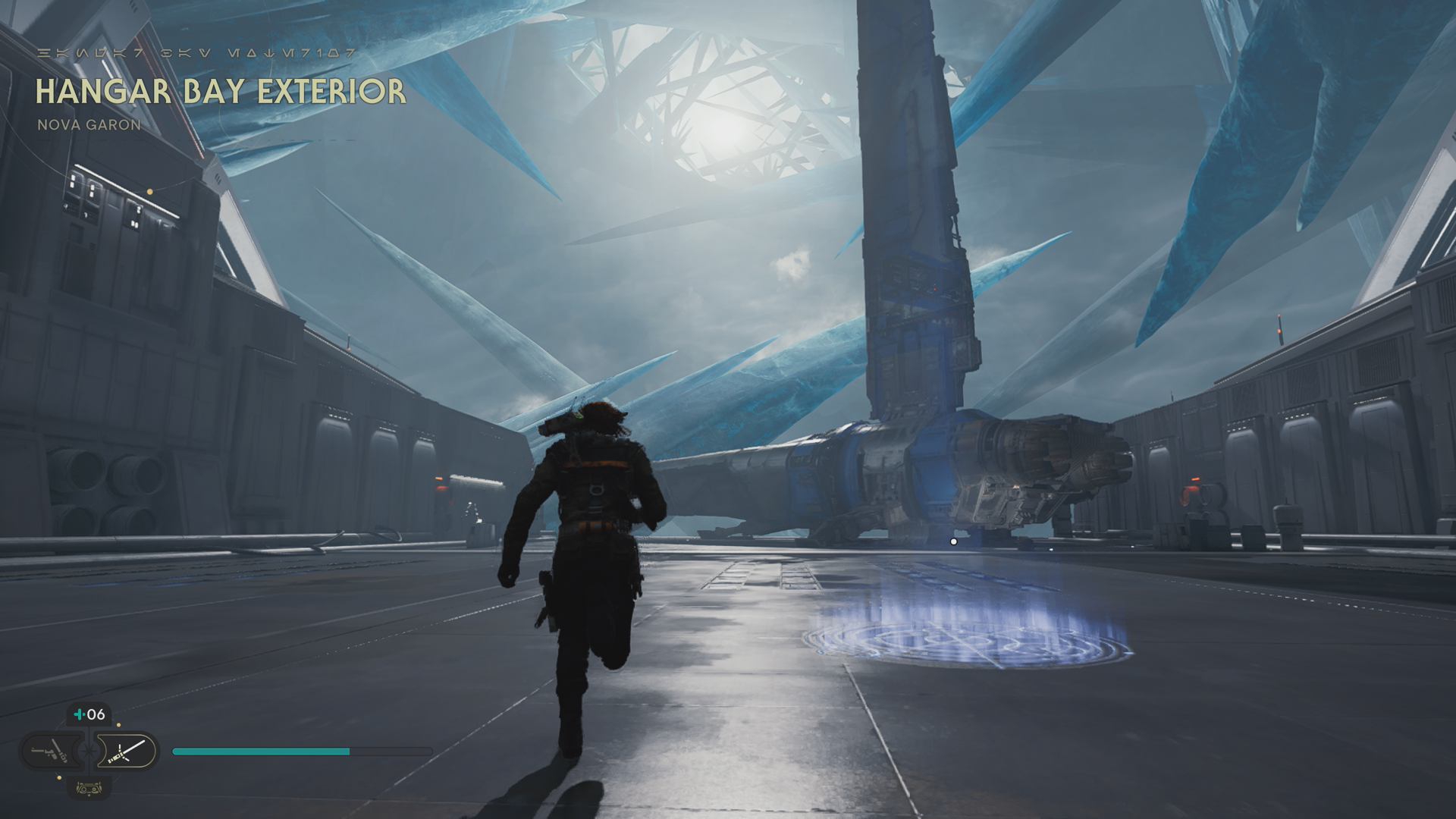The Star Wars Jedi franchise is exciting due to its generational setting and having its protagonist be a young refugee following the Jedi Purge. Star Wars fans will be familiar with multiple planets that Fallen Order had featured, and Star Wars Jedi: Survivor continues to display the remnants of the Clone Wars through environmental storytelling and droid enemies that are frequently encountered. Koboh is a new planet debuting alongside Star Wars: Jedi Survivor’s Jedha, which is well-established in the canon, but both planets together leave little room for much else.
Going to Coruscant in Star Wars Jedi: Survivor’s opening introduces new characters who Cal Kestis has grown fairly close to in the five years prior. Coruscant is a bustling city-planet soaked in neon, and it is exhilarating to be able to traverse its rooftops in a fairly linear level design. Players later crash-land at their desired destination of Koboh, and it is here that they spend a majority of the game afterward while trekking to-and-from several other locales. Unfortunately, Star Wars Jedi: Survivor’s environmental diversity pales in comparison to Fallen Order with regard to which planets are featured in each.
Star Wars Jedi: Survivor Largely Sticks to Two Primary Planets
Star Wars Jedi: Survivor’s Koboh is easily the game’s largest planet with a semi-open-world design that makes it distinct from all other locations in the Star Wars Jedi franchise thus far. This is a boon for fans who were less enthusiastic about Fallen Order’s Metroidvania level design—locations with a tighter level design are still an integral part of Survivor, but on a much wider scale when it comes to Koboh or Jedha since players make many return visits to each.
Star Wars Jedi: Survivor’s planets, including Coruscant, Koboh’s Shattered Moon, Nova Garon, and Tanalorr, are much more condensed and similar to Fallen Order’s planets. But getting to see fresh scenery is favorable when Koboh and Jedha are featured primarily.
There is much to do on Koboh and Jedha that make them fantastic planets to explore, and there is a lot of dynamic content within each, whether players are sticking to the main narrative content or perusing optional side content. But regardless of how explorative and exciting Koboh and Jedha can be, they lack an inherent amount of environmental diversity between them because they are both largely desert canyon biomes.
Star Wars Jedi: Survivor Lacks Fallen Order’s Environmental Diversity
Between Bracca, Bogano, Zeffo, Kashyyyk, Dathomir, Ilum, and Nur, Fallen Order has a lot more environmental diversity than Star Wars Jedi: Survivor. Planets and locations aside from Koboh and Jedha do have diversity in their environments, but because players spend so much time in these two narrative-heavy planets, it can be difficult to overlook the fact that they are awfully similar in terms of their biome and landscape.
One needed to be starkly opposite the other in order to make them more distinguishable, and while Jedha is identified through its sand dunes, it still looks quite akin to the canyon gorges that Koboh is identified by. Nova Garon’s colossal blue crystals are certainly unique, but this and other locations are only a pit stop compared to the amount of time players will spend on Koboh and Jedha, and therefore most of what players see is a canyon or a sand dune.
Further, if players decide they no longer want or need any items or abilities that are sold at any merchant NPCS, they could quickly lose interest in searching for respective resource materials, such as priorite shards in Star Wars Jedi: Survivor. Because there is much more space left on the Stinger Mantis’ holotable map and no other planets to travel to, the lack of environmental diversity the game has stands out sorely.
Star Wars Jedi: Survivor is available now on PC, PS5, and Xbox Series X/S.

